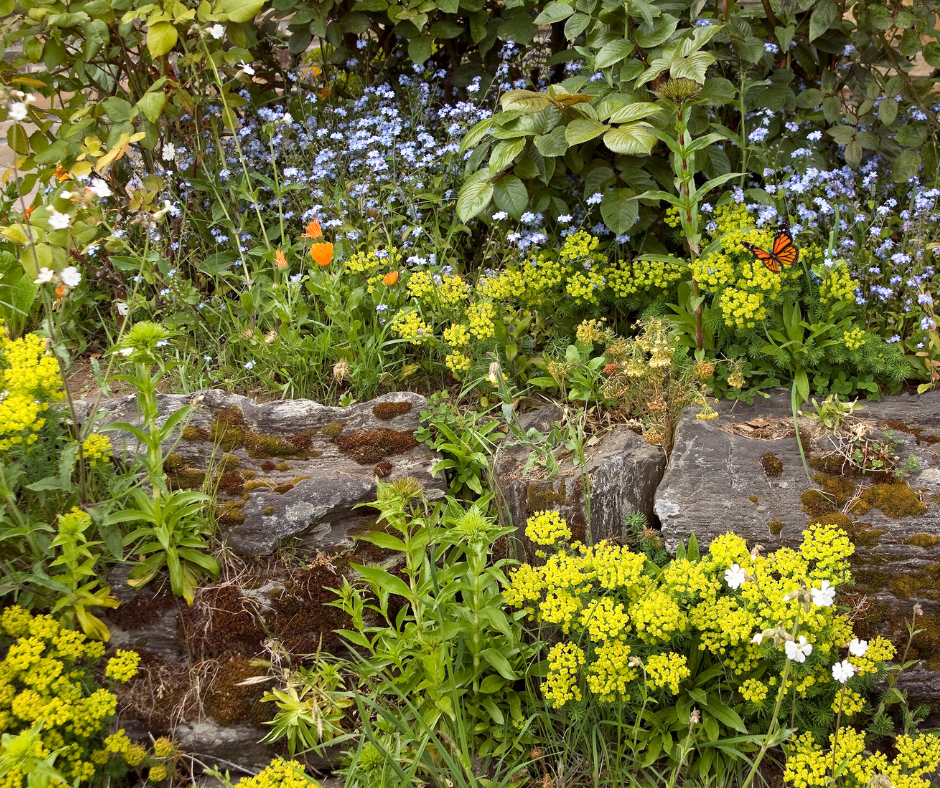The name is catchy, and it means exactly what it is requesting all of us – if possible to do: don’t mow your lawn for the duration of May.
It might raise the eyebrows of your neighbors, but there is plenty of science supporting evidence that this simple step could have a significant impact on the survival of pollinators.
By now, we are all aware of the frightening reality that pollinators, particularly bees are in grave danger. Without them, the results would be ecologically devastating, since they are essential to all of our edible fruits and vegetables. Farmers are dependent on pollinators in virtually all of their crops.
Land development, use of pesticides and even grooming our lawns or planting invasive species have had alarming consequences. Not only bees, but butterflies and even birds that rely on flowering trees are being affected by this decline.

Enter the Xerces Society for Invertebrate Conservation, heroes to pollinators and other insects that are crucial to our ecosystem. Other organizations, such as Bee City USA , National Wildlife Foundation and Sierra Club are all supporting the “no mow” concept, and cities and states across the country are participating in surprising ways. It’s second nature to Englanders, who are credited with creating the movement.
So, why not mow your lawn?
To summarize, it is to allow pollinators that have been dormant for the winter find their sustenance in flowering grasses, trees and shrubs. When grass in particular is tamed too much, it does not allow nature to grow what bees and butterflies need. Often, “undesirable” flora are destroyed, often with harmful insecticides. Chances are, most people are not aware of the deadly consequences of many insecticides.
Of course, No Mow May is not a popular philosophy to many – think of landscapers and homeowners who want to control their growing grasses for aesthetic reasons. And of course, many of us in Southern Delaware live in communities with homeowners’ associations. Some even have bylaws about the required height of grass.
There are also concerns out there about the proliferation of ticks that live in grasses and threaten our outdoor pets and certainly us. Yes, it is true that ticks would love it if you didn’t mow your lawn for a month, but according to advocates, the bees need the flowering grass more than they do.

One gardening blogger who writes “The Impatient Gardener” predicts the movement will backfire in the United States because of the size of our lawns and groomed property. She offers these other sensible suggestions instead.
· Create a bee and butterfly garden using native plants, combining them so that something is always blooming from early spring through the fall.
· Dedicate an appropriate patch of your existing lawn to do this.
· Incorporate native plants into your existing garden space, and consider eliminating or moving ornamental, non-native plants.
In our state, the Delaware Nature Society and other nurseries have native plant sales. The DNS catalog provides photos of many, and gives you guidance on height, sun and soil requirements, colors and when they bloom.
They, too advocate for building an oasis of native flowering trees, shrubs and flowers.

Monarch butterflies, for example need milkweed in August and September to refuel for their long journey back to Mexico. Without it, their numbers are also astoundingly low because milkweed has been treated as a nuisance.
So, if the concept of ignoring your lawn for a month seems absurd, at least you now know about it, and other options you can consider to help save the bees while beautifying your garden.